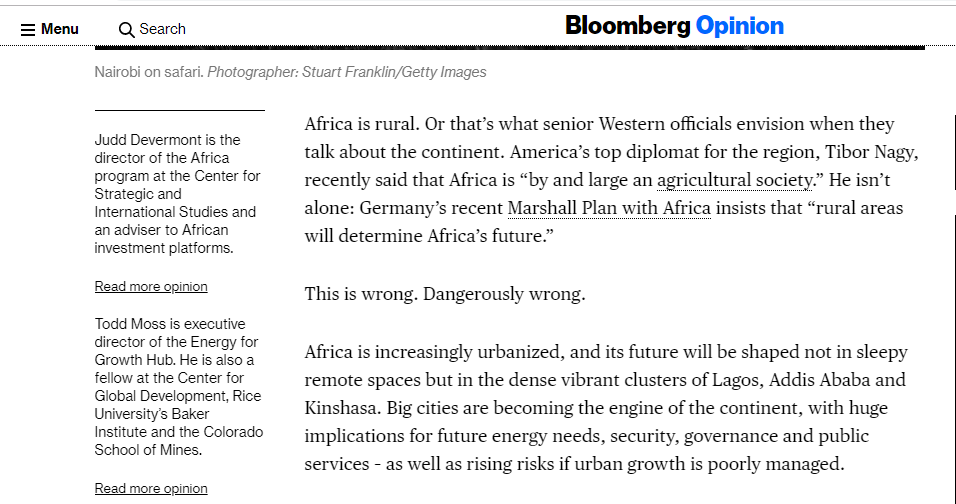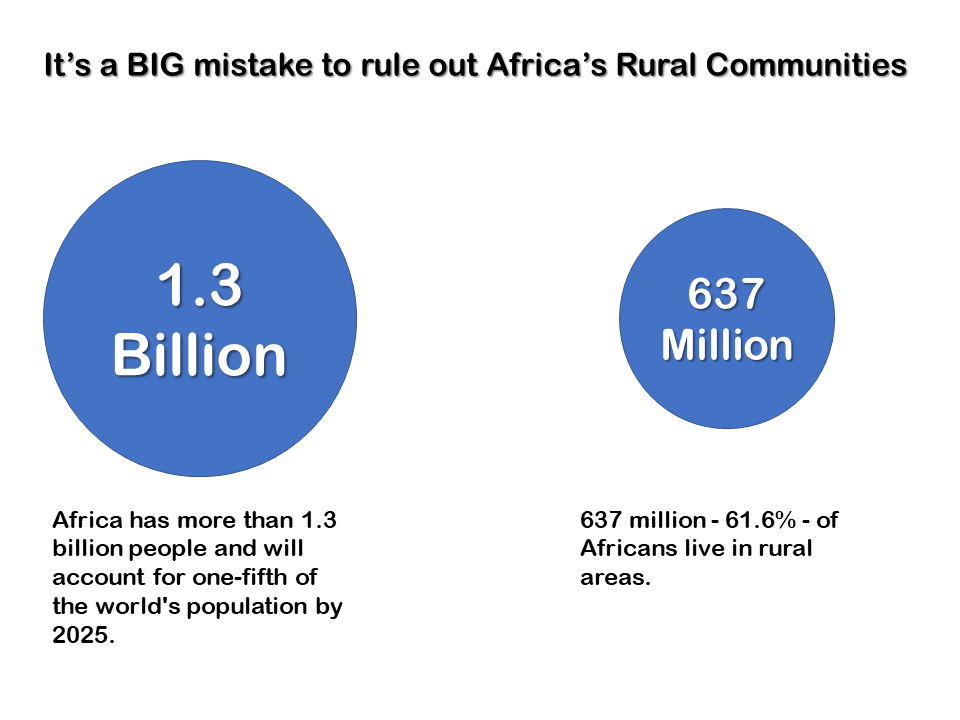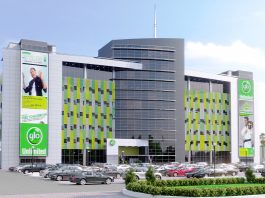There is some disconnect between rural Africa’s portrayal in the media and what it contributes to the economic transformation of Africa. Narratives like this (see image below this paragraph) further fuel that disconnect and consequently impact interests and activity in many rural communities in Africa. We quickly forget that many urban areas today were not too long-ago rural communities themselves.
 There is still ongoing debate on the definition of urban areas. The main component is the size of population, with a threshold above which an agglomeration becomes urban. Other criteria are used, such as the percentage of households engaged in agriculture, administrative boundaries or service provision, and a mixed approach is sometimes adopted.
There is still ongoing debate on the definition of urban areas. The main component is the size of population, with a threshold above which an agglomeration becomes urban. Other criteria are used, such as the percentage of households engaged in agriculture, administrative boundaries or service provision, and a mixed approach is sometimes adopted.
However, beyond the difficulty to set a standard definition, the idea that there is a clear division between an urban and a rural area misshapes the reality of what rural, urban, growing peri-urban and “rurban” areas are today. Remote rural areas still exist, particularly in sub-Saharan Africa, but generally the improved access to ICTs, information, and to transportation networks, as well as better educational standards foster the movement of people, blurring the limits of the old rural – urban divide.
There is no clear spatial divide between “rural” and “urban”; in fact, there is a gradual crystallisation of the rural population around existing urban agglomerations (i.e. their main output markets), thereby transforming the countryside into an intricate web of hybrid constellations.
 Rural areas are arguably the most overlooked spaces in Africa. This is true both in terms of government services as well as corporate attention. But 61.6% is a massive consumer segment to ignore simply because of inadequate information.
Rural areas are arguably the most overlooked spaces in Africa. This is true both in terms of government services as well as corporate attention. But 61.6% is a massive consumer segment to ignore simply because of inadequate information.
A general misconception is that rural equates to poor. Hence, why this region is often neglected, but more and more Africans are entering the consumer class, and many of these are in peri-urban or rural areas, creating appealing new investment opportunities.
Most economic transformations begin in rural areas. Take agriculture for example, a significant portion of Africa’s population and agricultural resources (including large swaths of unused arable land) are in rural areas. If the potential of the continent’s rural areas is developed and harnessed, Africa could set off an agricultural revolution that would lead to significant increases in food production, job creation, and economic growth.
In Ghana, for instance, online platforms such as Esoko, Farmerline, and Trotro Tractor have provided farmers with accessible services. These have included voice messages and SMS extension advice. This helps farmers obtain information about how to access markets and extension services. The number of farmers subscribed to digital services has grown by between 40% and 45% per year in the last three years.
Mobile banking is also another strong success of rural potential. The rise of digital banking in several rural regions has resulted in Sub-Saharan Africa’s status as the fastest growing mobile market in the world.
In Zimbabwe for example, Econet’s EcoCash, a mobile-enabled funds transfer service, became so popular that by mid-2017 electronic money counted for 70% of all financial transactions in the country.
By 2020 there is projected to be up to 535 Million mobile subscribers across sub-Saharan Africa, and almost 1 Billion SIM connections, translating in about 85% penetration rate. Building on this widespread communications availability, mobile-facilitated monetary transactions help to create a more financially inclusive society.
From digital banking to FMCG, rural communities have much potential, and investment can empower them through integrated approaches. This should start with basic physical and social infrastructures such as roads, energy, education and health facilities. Investments should also target relevant skills development and entrepreneurship support, including through cooperatives and innovative financial mechanisms.
Promoting rural areas also means combining agriculture with industrial and service activities to stimulate synergies and diversification, and to seize new opportunities in ICT, tourism, bio-technologies, environment protection and renewable energy generation, for instance.
Integrated approaches also include promoting linkages among public and private stakeholders, developing rural workers’ and entrepreneurs’ structures, encouraging dialogue among them and with authorities, and giving capacities and a voice to youth and women, who are the true engines of rural innovation and growth.
Think of the Songhaï Centres in Benin where productive enterprises run activities in farming, processing, handicrafts, marketing, energy production, irrigation, repair, recycling and other services, with strong emphasis on holistic approaches, self-reliance, research and training.
Think of the Rwandan Telecentre Network, with rural telecentres that provide IT services but are also delivery hubs where individuals, companies and government can advertise, sell, buy and exchange products and services from e-training to banking, insurance, taxation, healthcare, electricity and information.
While many theories look at the consequences of migration and focus on engineering solutions for cities to cope with rampant urbanisation, we should begin to explore the viability of installing capital centres at the heart of rural communities that would provide education, vocational training and other basic services to the local populations so that urbanisation becomes a more constructive process that is proportionally paralleled by a steady and shared economic growth and human development.
AUTHOR: Iweka Kingsley is the Founder/Publisher of Africa-OnTheRise.com








































